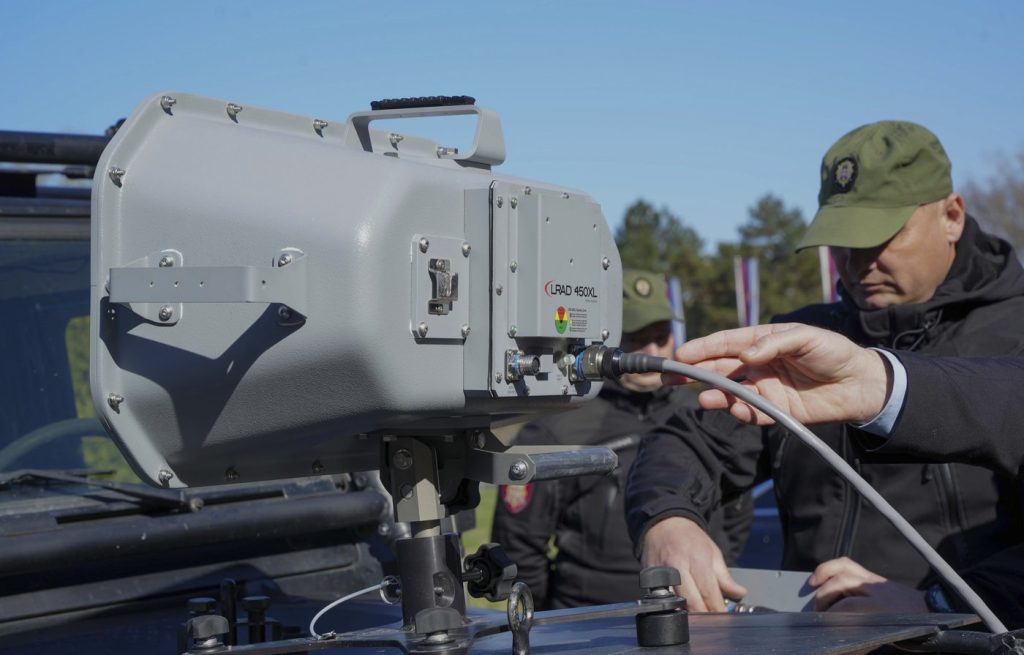BELGRADE, Serbia — During a significant anti-government protest on March 15 in the capital city of Belgrade, an alarming sound disrupted the peaceful atmosphere, triggering panic among demonstrators. Ivana Ilic Sunderic, a witness at the rally, described a peculiar and frightening noise that seemed to roll toward the crowd, prompting people to flee to safety. The unsettling sound, lasting only 2-3 seconds, was vividly characterized by Sunderic as being reminiscent of "a sound from hell."
Witness accounts of this incident have led to widespread speculation and accusations that the Serbian police or security forces, under the tight control of President Aleksandar Vucic, deployed an illegal acoustic crowd control weapon against peaceful protesters. These devices can reportedly cause severe physical effects such as ear pain, disorientation, and even permanent hearing damage.
This incident has compounded pressure on Vucic, who is already facing nearly five months of anti-corruption demonstrations following a tragic slippage incident in November 2023, where a concrete canopy at a railway station in Novi Sad collapsed, resulting in the deaths of 16 people. Following the protest, officials have issued contradictory statements, denying that any acoustic weapon was used while facing mounting demands for accountability regarding the mysterious noise that caused panic among attendees.
A video from the protest clearly shows thousands of protesters using their mobile phones in silence before suddenly reacting in fear. Eyewitnesses have reported feelings of confusion, headaches, and ear pressure after the incident. Sasa Cvrkovic, a 23-year-old political science student, recounted the chaotic scene, highlighting how the eerie sound caused a stampede, with one individual suffering a leg injury in the ensuing rush for safety.
Vucic has dismissed allegations of sonic weapon use as "lies and fabrications," stating that such claims are part of a perceived Western effort to undermine his presidency. Initially, Serbia's police, army, and security agency, BIA, denied possessing the U.S.-made Long Range Acoustic Device (LRAD)—which is illegal in Serbia. However, after photographs emerged showing the device at the protest, officials later admitted they had it but insisted it was not aimed at the demonstrators.
Officials claim that acoustic devices in their possession are only used for crowd warnings. Interior Minister Ivica Dacic characterized the equipment as nothing more than "loudspeakers" aimed at alerting people in case of disturbances. Experts, however, have raised doubts about the official narrative surrounding the incident. Thomas Withington, an analyst specializing in electronic warfare, noted that the panic observed in footage from the protest was unprecedented and indicative of a distressing trigger.
In response to the uproar, a petition backed by over half a million signatures has called for an independent investigation from various international bodies into the alleged use of sonic weapons against the demonstrators. Rights organizations in Serbia are also taking their case to the European Court of Human Rights, presenting over 4,000 testimonies from individuals reporting psychological and physical issues post-incident.
Despite these developments, Vucic's pro-Russia government has invited the U.S. Federal Bureau of Investigation and Russia's Federal Security Service to investigate the matter, to which no immediate responses have been forthcoming. The protests and subsequent chaos have spotlighted significant concerns about the use of unconventional weapons against civilians and have drawn critical international attention to Serbia's political climate under Vucic.










